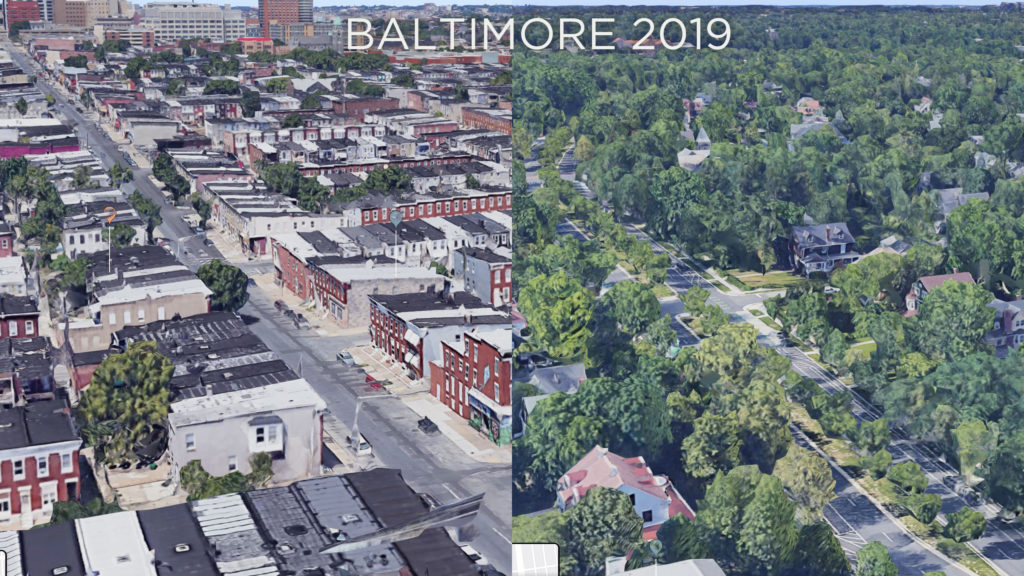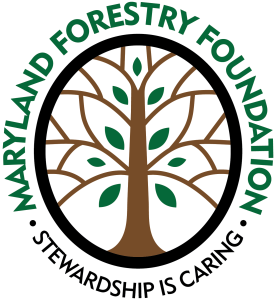
Across the nation, the presence or absence of trees in neighborhoods may seem like a simple aesthetic concern. However, research indicates a deeper and concerning connection between public health inequities and the unequal distribution of tree cover. Tree disparities in urban areas are far from random, but rather a reflection of historical and social injustices that continue to affect the everyday health and well-being of our lives today.
Often termed the “urban tree divide,” the unequal distribution of trees is strongly linked to the legacy of discriminatory redlining practices, where Black homeowners were systematically denied services such as mortgage loans in an attempt to concentrate these residents in undesirable areas with the lowest public and private investment. Today, formerly redlined cities have significantly lower tree cover, greater impervious cover, and lower forest ecosystem services (Nowak et al., 2022).
The implications of tree disparities on public health are profound. Trees play a crucial role in improving air quality by absorbing pollutants, an ecosystem service not present in neighborhoods devoid of trees and greenspace. As a result, residents in these areas face increased risks of respiratory illnesses and cardiovascular problems. For instance, in the formerly redlined community of Baltimore City, residents experience the highest rates of hospitalizations for asthma attacks in Maryland (Baltimore City Health Department, 2022).
Moreover, the absence of trees exacerbates the “heat island effect,” leading to higher temperatures. According to a recent study of 108 urban areas, formerly redlined neighborhoods experience an average higher temperature of 5 degrees Farenheit than non-lined neighborhoods, with the highest range extending to a sobering difference of 36 degrees Fahrenheit (Hoffman et al., 2020). This, in turn, increases the risk of heat-related illnesses, disproportionately affecting these marginalized populations.
Beyond the physical aspects, the mental health and overall well-being of residents are also compromised. Trees and green spaces have been proven to reduce stress and promote mental health. The lack of these amenities in tree-deficient areas deprive residents of crucial opportunities for relaxation and community interaction.
The connection between public health inequities and tree cover disparities in the U.S. is a stark reminder that environmental issues are intricately linked with socioeconomic and racial injustices. By expanding urban forestry efforts such as employing equity-based tree planting programs, building community green spaces, and engaging and informing
residents, we can take meaningful steps towards creating healthier, more equitable, and more resilient communities.
References – Blog 1
Anderson, M. (2020, January 14). Racist Housing Practices From The 1930s Linked To Hotter Neighborhoods Today. NPR. Retrieved from https://www.npr.org/2020/01/14/795961381/racist-housing-practices-from-the-1930s-link ed-to-hotter-neighborhoods-today
Baltimore City Health Department. (2022, May 12). Asthma. The City of Baltimore. Retrieved from https://health.baltimorecity.gov/node/454
Hoffman, J. S., Shandas, V., & Pendleton, N. V. (2020, January 13). The Effects of Historical Housing Policies on Resident Exposure to Intra-Urban Heat: A Study of 108 US Urban Areas. Climate; Multidisciplinary Digital Publishing Institute. https://doi.org/10.3390/cli8010012
Nowak, D. J., Ellis, A., & Greenfield, E. J. (2022, May 1). The disparity in tree cover and ecosystem service values among redlining classes in the United States. Landscape and Urban Planning; Elsevier BV. https://doi.org/10.1016/j.landurbplan.2022.104370
Redlining—and Greening—of Cities. What’s the Connection? – American Forests. (2022, June 28). American Forests. Retrieved from https://www.americanforests.org/article/redlining-and-greening-of-cities-whats-the-conne ction/
